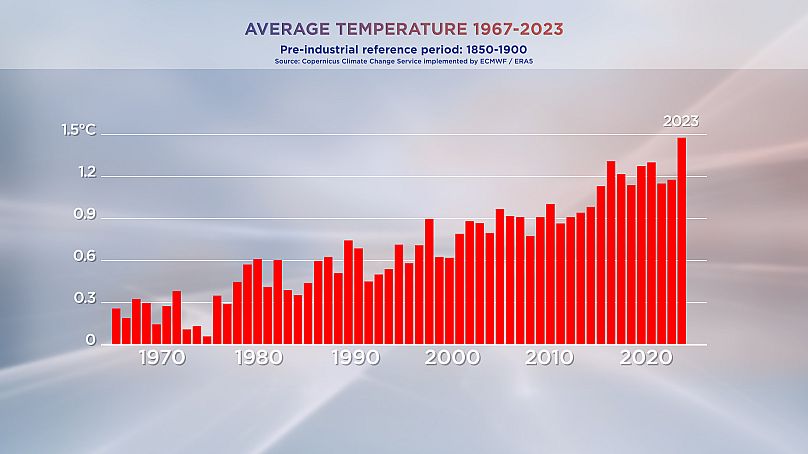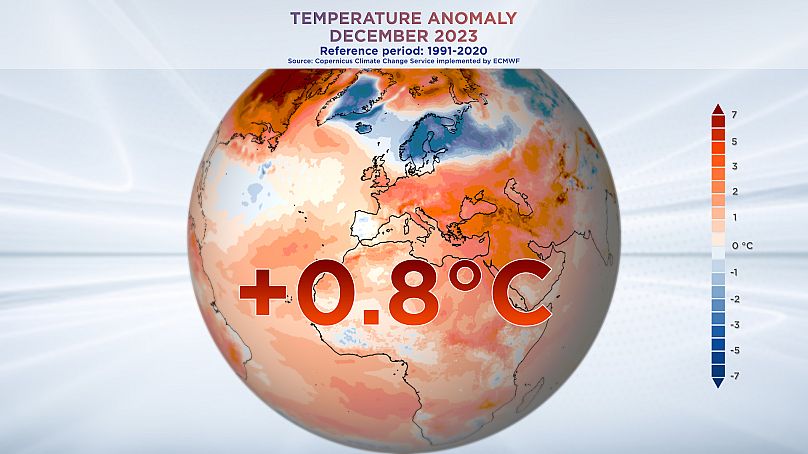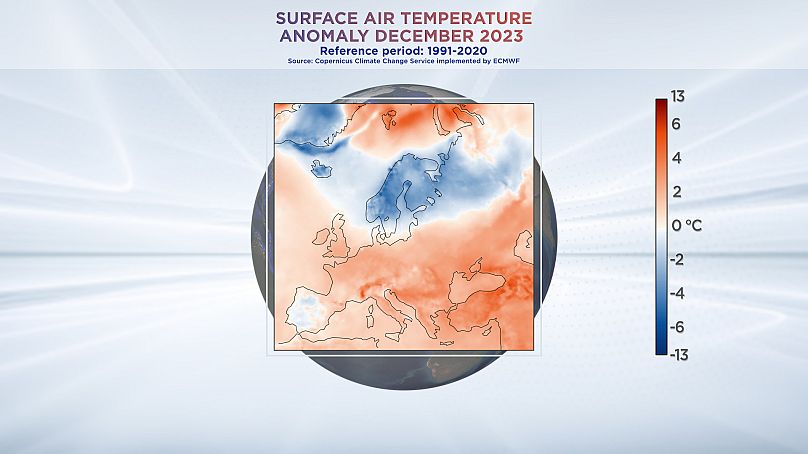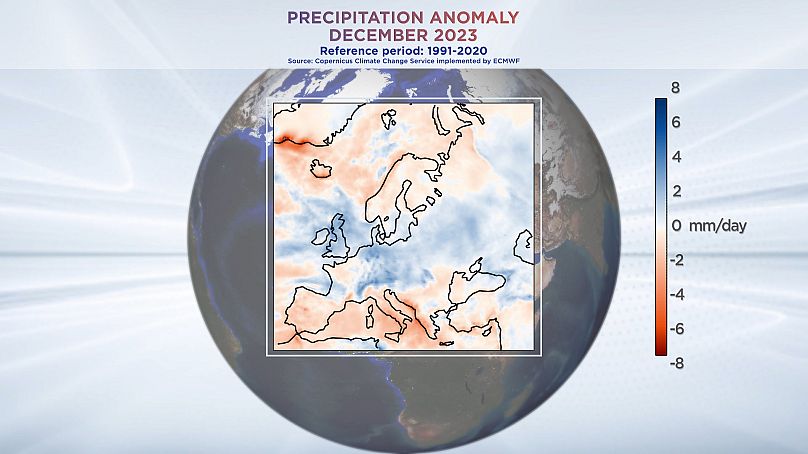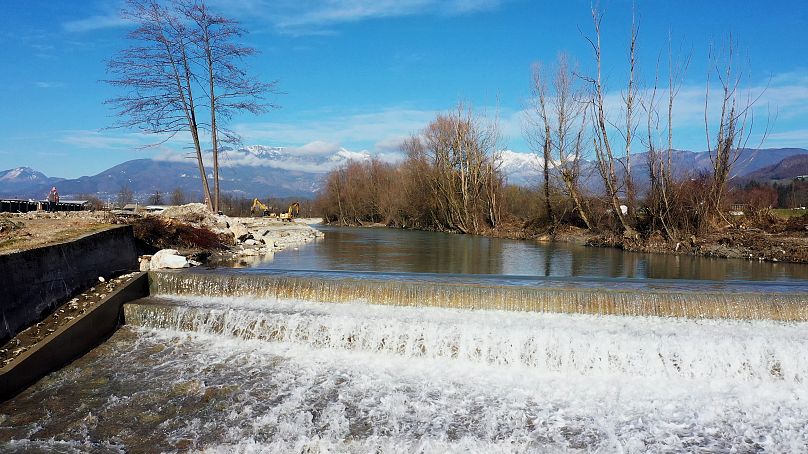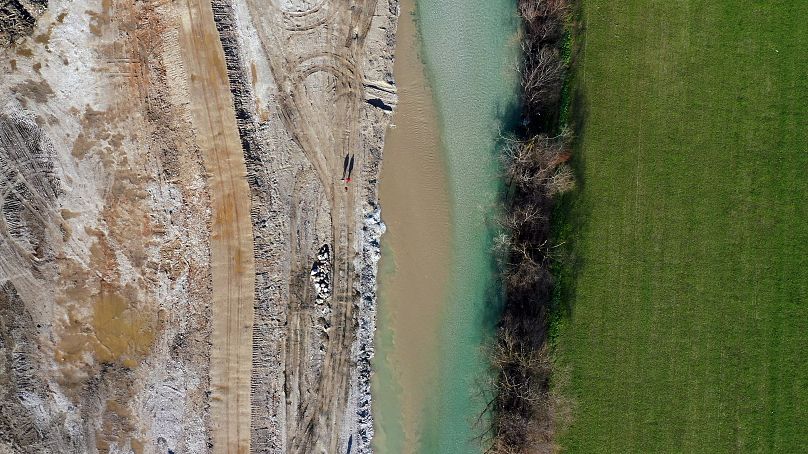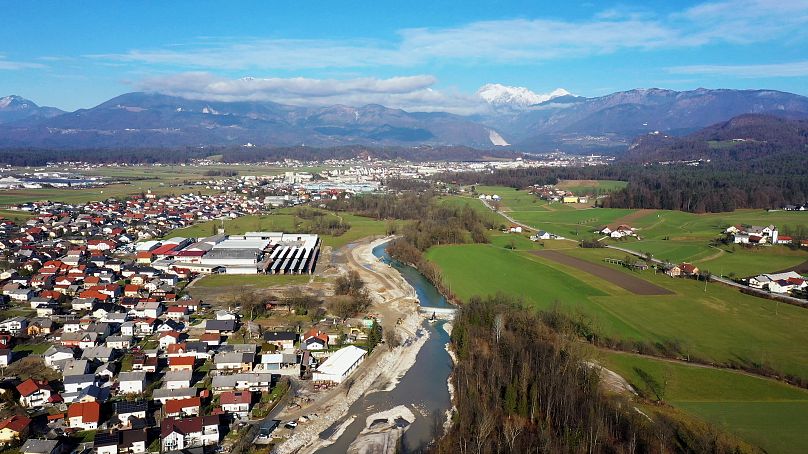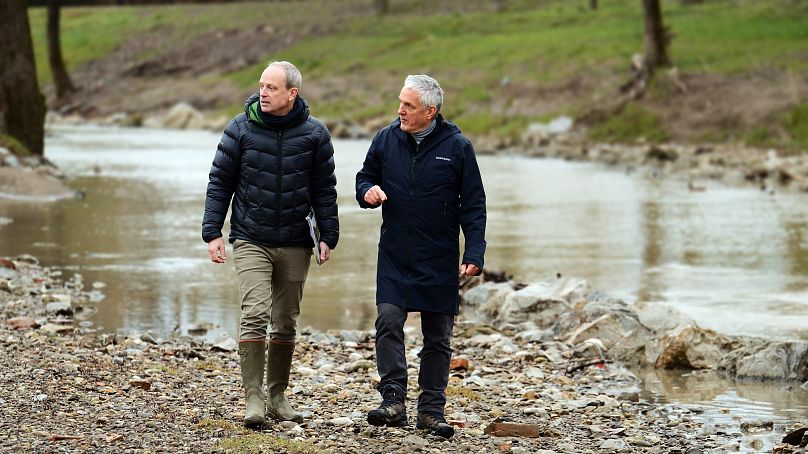Slovenia is raising levees and levies in a nationwide effort to become resilient to heavy rainfall and flash flooding. Climate Now reports from the riverside on the works underway and offers insight on the latest Copernicus climate data.
Before diving into Slovenia's flood resilience plan, let's review the latest data from the Copernicus Climate Change Service, which confirms that 2023 was indeed the warmest year on record. The past 12 months were almost 1.5 degrees Celsius above the 1850-1900 pre-industrial average.
The higher temperatures are being attributed to several factors - mainly more greenhouse gas emissions, warmer oceans and lower sea ice concentrations.
We also had the warmest December on record, with temperatures over 0.8 degrees Celsius above the 1991-2020 average. In Europe it was much colder than average from Scandinavia to Russia, and then unusually warm from Ireland to the Black Sea. December was wet for many of us, with a succession of storms in western, central and eastern Europe.
Slovenia builds resilience to heavy rain
"More than two thirds of the entire country was flooded instantly," recalls Neža Kodre, Director of the Slovenian Water Agency as she remembers the devastating effects of heavy rain last August.
Six months later, and the country is in the middle of a major flash flood adaptation effort designed to make Slovenia much more resilient to the intense rainfall associated with climate change.
There are 250 active sites along water courses across Slovenia, where huge trucks and excavators work to build up weirs, widen riverbanks and raise embankments. Work has already finished on more than 700 other similar sites.
At the spot we visit, near the town of Kamnik, Kodre explains the plan: "We are establishing the basic flow of the riverbed by removing material. At the same time, we relocated the embankment, thereby giving space to the river."
Rising temperatures can lead to rising rivers
Nearly everyone was hit by the floods last August - 183 of the 212 municipalities in Slovenia were impacted. The country experienced 63% more rainfall than average last summer.
It's not the first time the country has faced flooding, either. In 2010 and 2014 Ljubljana saw damaging floods that ruined homes, schools and businesses.
Slovenian weather expert Tanja Cegnar warns that rising temperatures due to climate change will simply increase the flash flood risk: "We will get more heavy rain in the future, especially these events during summer, when air is warm and there is a lot of moisture in the air."
For each degree of warming, the air can hold 7% more moisture.
"So we are putting a lot of effort into improving our flood warnings and we are really closely working together, meteorologists and hydrologists, to issue the warnings in due time," Cegnar tells Euronews.
Flood solutions for different environments
Different approaches to adapt to flash flooding are applied in different parts of Slovenia. Upstream, in the mountain torrents, systems are installed to trap heavy branches and trees before they can do damage to buildings.
In the city, there are a range of solutions in place. In dense urban areas, the best fix is to raise river embankment walls to well beyond the height of a 500-year return period flood.
In other areas along the Gradaščica river there is enough room to dig a wider riverbed, to preserve the trees, and slow down the water. This is what's known as a 'nature-based' solution, and although it costs less to implement and looks better for local residents and visitors, it does require regular upkeep.
"Maintenance will be necessary every year, let's say even twice a year, to remove excessive vegetation, for example dead trees or fallen trees, so that things can regenerate naturally," says flood protection engineer Rok Fazarinc.
The flood adaptation in Slovenia is expensive. The government has so far committed half a billion euros to help residents, businesses and local authorities to pay for the clean up and restoration, and much more has been committed to finance adaptation.
To achieve its objectives, the government raised a temporary five-year tax on bank assets of 0.2%, which should raise 100 million euros annually. The corporate income tax rate has also been raised for the same period from 19% to 22%, starting in 2024.
State Minister Boštjan Šefic will oversee the overhaul of infrastructure, and he justifies the decision.
"Tax increases are never welcome, but we believe that this is an investment in the future, also for the economy. Because structures that are more resilient, making us safer against floods and other natural phenomena, will also pay off significantly later," he says.
Alongside taxes comes the social challenge of convincing people who live along streams and rivers to adapt their mindset to the new climate warming reality the country is facing. Water agency director Kodre says this is one of the most time-consuming aspects of the project.
"People don't want measures in their backyard, they don't want dry retention basins in their area. So, there is a lot of work involving public engagement, different sectors, which poses a significant challenge," she smiles.












